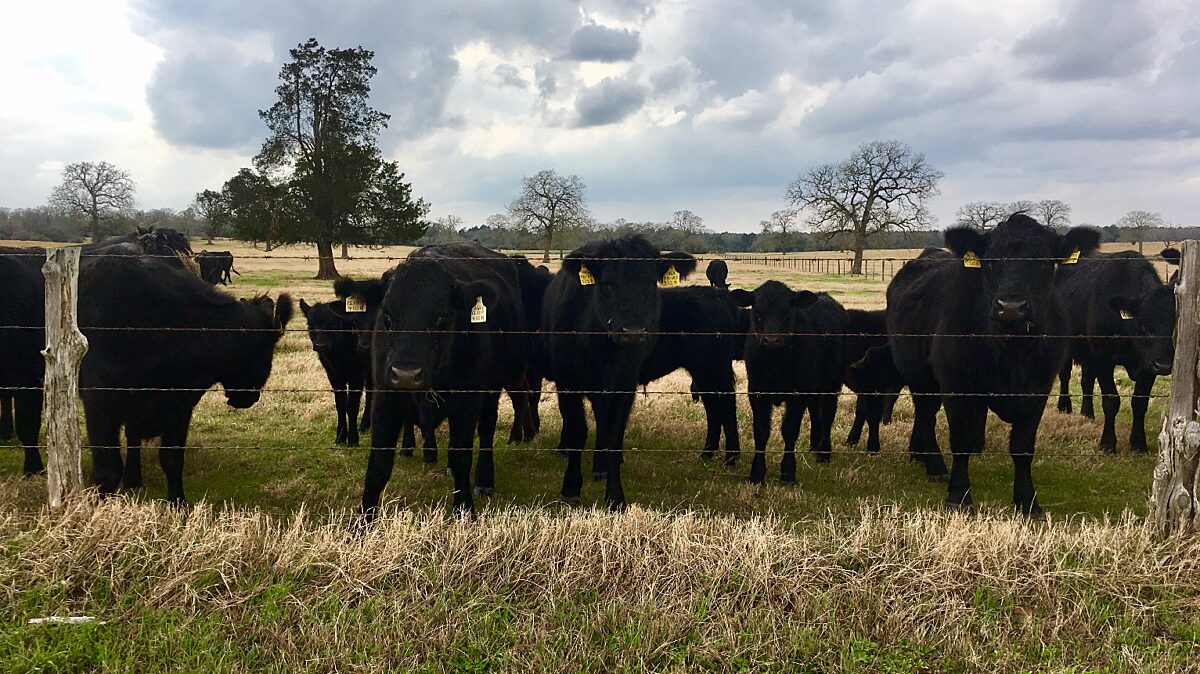Watch Out for Those Overprotective Momma Cows
Guest Author
Special Contributor to FB.org

photo credit: AFBF
Guest Author
Special Contributor to FB.org
By Mary Fischer
If you ever get the chance to visit with a cattle rancher or beef producer, you may hear some good stories about overprotective momma cows. Cows can be very protective of their calves, even more so than some people!
First calf heifers (young cows that have given birth to their first calf), usually aren’t too bad because they don’t know the process yet. In fact, a heifer will sometimes walk away from her calf, not knowing it is hers to take care of. At this point, the farmer has to get the two of them into a pen together and acquainted so the calf will begin to nurse. This can involve some good kicks from the cow, either to the calf or to the farmer. Farmers learn to stay clear of those back legs but sometimes kicks hit the target and it can hurt.
Most cows are in a pasture and that is where they give birth to their calves.
A cow, who has had calves before, knows she may have to defend her calf from coyotes, big cats or other animals (depending on where you are in the U.S.) that may think it will make a tasty meal. For these momma cows, the farmer that feeds her every day is sometimes also viewed with suspicion.
Most cows are in a pasture and that is where they give birth to their calves. When it’s a good delivery, a calf is born and the cow immediately licks it off to get it dry and moving. A healthy calf will usually stand on its own within the first 30 minutes to an hour after birth and begin nursing. Shortly after birth, some farmers put ear tags in the calves. This helps match cows to their calves. The tag is like putting a pierced earring into an ear. Tags usually have a number matching the cow and the birthdate of her calf. The farmer has to catch the calf shortly after it is born to put in the ear tag. If he waits too long, the calf may be too fast to catch. Enter the overprotective momma cow! The cow does not like anything or anyone getting near her newborn calf. If the farmer gets near and catches the calf, the calf will bawl and the cow will come running, so the farmer has to be quick.
A farmer I heard about decided to work on a calf in his pickup truck, only to have the cow charge and tear up the cab. A large cow is strong and may ram a truck, a 4-wheeler or gates to protect her calf. Another story I heard recently was about a farmer checking his cows who found one in a pasture with an injured calf beside her. He knew something had tried to attack the calf because the cow had run circles in the ground around the calf defending it, only to accidentally step on and injure it.
A couple of years ago, my husband was showing me how to do chores, as he was going to be away for a weekend. While out, he noticed a calf that needed tagging. He dumped feed on the ground to get the cows to eat while he caught the calf. When he caught the calf it bawled; the cow immediately faced off and bawled back.
Before my husband could let go or do anything, the cow rammed into him, rolling him out of my sight where I sat in our pickup. Before I could get out to help, she rammed him again. She rolled him about 15 feet one way and back the other way. I started yelling at the cows because all of them had gathered around. They backed off as my husband lay on the ground, moaning. He told me to give him a minute as the cow had knocked the wind out of him. He ended up with bruised ribs and some scrapes where the cow had stepped on him and was stiff for a while. We were very thankful that he wasn’t hurt worse. I was glad I was along that day as he is usually out by himself.
Farming is considered a dangerous occupation. Farmers always must be mindful of livestock, the machinery they’re operating, the terrain of the land and weather conditions. Still, most would not trade this lifestyle for any other.
Mary Fischer is a farmer and Farm Bureau member in Missouri. She serves on AFBF’s Promotion & Education Committee.
Top Issues
VIEW ALL